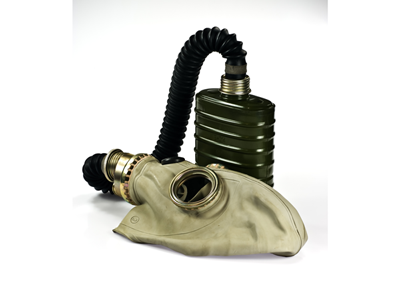Military Gas Mask Hoses and Important Things You Must Know About Them
Gas masks have been an unfortunate necessity since World War I, and they gained immense popularity and acceptance during World War II. Gas masks are usually worn on the face and comprise an exhalation valve, filters, and clear viewing area. These gas masks are made of specialized materials and are designed to protect the wearers from harmful contaminants in the air. Sometimes filters are mounted to the mask and the negative pressure from the user’s breathing pulls air through the filters. In other systems, commonly called PAPR’s, a powered fan moves contaminated air through filters in a body-mounted pack that is then carried to the user’s face mask through a flexible hose. The hoses supply clean oxygen to the wearer without exposure to biological, chemical, and nuclear agents (CBRN). These hoses share some common features of industrial hoses but they differ in terms of design and construction. Here we will explore how they are different.

Learn How Gas Mask Hoses Differ from Regular Breathing Hoses and Tubing
1. Gas mask hoses serve the same purpose—moving clean air from one point to another-as breathing hoses and tubes used in hospitals, but there are several differences that make them unique. The following pointers would help you understand it better.
- The gas mask hoses and tubes are made using either of the following materials owing to their proven capability to withstand harsh environments.
- EPDM is a durable, synthetic rubber which offers resistance against ozone, oxygen, and sunlight. EPDM hoses and tubing possess excellent electrical properties; water, heat, and steam resistance; and are useful across a temperature range from -60°F to +300°F. It can be made flame retardant and is good for shorter-term CBRN applications.
2. Butyl rubber hoses and tubing can withstand decontamination and chemical warfare agents. The material is durable yet elastic enough to form a tight seal. The rubber hoses are relatively less porous than other materials. Butyl is the industry standard for CBRN resistance.
3. The hoses must be CBRN/NBC compliant. The term CBRN stands for chemical, biological, radiological, and nuclear defense. It refers to protective measures to be taken in environments where those hazards may be present.
4. These hoses are connected to a filter cartridge and enable users to inhale purified air.
5. The hoses are usually tested for mobility and secured attachment as the users are required to continuously move between places.
6. The gas masks are usually made lightweight yet durable so that they are easy to carry and do not cause any breathing resistance.
7. Most gas mask hoses possess flexible designs, so users can connect them with other hoses to create long purification systems.
Medical and industrial breathing tubing is generally lighter weight, is more likely to be made from plastic, may be disposable or limited use, and is not required to provide protection from external airborne hazards to the extent gas mask hoses are.
Owing to the important role played by these hoses, it is important to source them from trusted and experienced manufacturers of military supplies. Crushproof Tubing Company is one of the leading manufacturers of gas mask hoses and breathing tubes as well as other types of military hoses. In addition to this, the company also provides various types of military products such as bellows, protective boots, and inflation, blower, drain and intake hoses. Unlike other manufacturers, the company offers these hoses in custom specifications to meet your application requirements.

